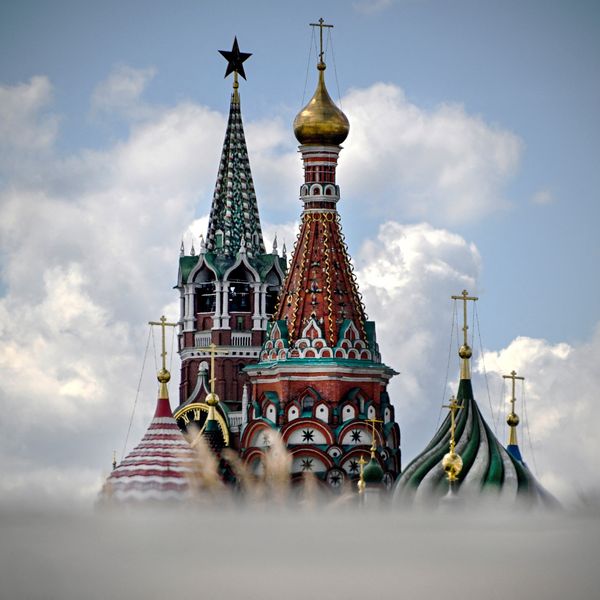ACADEMIC INCUBATOR — Russia’s current military capabilities in the Arctic are sufficient enough to cut off sea logistical routes and lines of communication between the U.S. and NATO. Climate change, logistical sea routes, and Russian military assets are threatening U.S. strategic capabilities and influence in the Arctic. Russia’s expansion into the Arctic and military posturing on the Kola Peninsula, has given it de facto control over the Northern Sea Route.
The Cipher Brief’s Academic Incubator Program partners with national security-focused programs from colleges and Universities across the country to share insights from the next generation of national security leaders. The views expressed are those of the authors.
In the event of a conflict, Russia could attack Europe from the West and North America from the East. Russia currently has an advantage in the Arctic due to their geographic hold, however, the U.S. must prepare as a strategic deterrent for future aggression. The U.S. needs to focus more financial resources and expand military personnel capable of operating in Arctic conditions to engage Russia in the Arctic, and work with NATO partner forces and the Intelligence Community (IC) to gather information about Russia’s intentions and military build-up.
Background
Climate change is making the Arctic more accessible than ever before. The ice has become more fragile and thinner, causing more variability in the quantity and the location. Its variability allows greater oil and natural gas exploration, and opens shipping routes for longer periods, which creates greater competition for control over these commodities. With one-third of Russia’s economy already dependent on oil and natural gas deposits, Russia will likely seek complete control over these potential new reserves to make more money. Additionally, the shipping route can be open year-round, affecting trade routes and shipment speed.
The Northern Sea Route (NSR) is key terrain that stretches 5,600 kilometers from the Bering Strait to the Kara Gate, and divides Russia’s northern border and the Arctic. The NSR is a strategic geopolitical shipping lane. Contrary to the international community, Russia has claimed the NSR as an internal domestic waterway. Russia also gave Rosatom, its nuclear agency, control over the NSR and further limited foreign access. If left unchallenged by the United States, U.S. companies could have difficulty accessing the route for shipping, and the U.S. military could face restrictions as it accesses the waterway to preserve freedom of the seas. In the event of conflict, Russia would have full control over the waterway.
In 2014, Russia established the Northern Fleet, consisting of naval vessels, Russian Air Force elements, and Russian Ground Forces. The Northern Fleet protects Russia’s interests on the Kola Peninsula located in Scandinavia. That’s where Russia could defend the western entrance of the NSR, and project power into Scandinavia and Europe. In the event of a conflict with NATO, Russia could use the Kola Peninsula as a staging area into Europe and the Atlantic Ocean to cut off lines of communication and sea logistic routes between the U.S. and Europe.
In addition to the Northern Fleet, Russia reopened 50 Soviet era bases in the Arctic, and conducted its largest military exercise post-Cold War there in 2018. Comparatively, U.S. Northern Command has only recently made Arctic development a priority and has received $46 million from Congress for development. Currently, the U.S. has one base in Greenland and six in Alaska.
Russia has a greater advantage than the U.S. when operating in the Arctic due to their understanding of Arctic conditions and their studies of how its native tribes have survived in these conditions. Russia’s coastline stretches 24,140 km. and accounts for 53 percent of the Arctic Ocean coastline. In comparison, the U.S.’s Arctic coastline is 1,706 km. The U.S. needs to approach development in the Arctic as a deterrent for Russian aggression, modestly investing in preparation now for potential future conflict. To prepare, the U.S. needs to work with NATO allies, expand DoD development, and use the IC to gather information on Russian actions.
How the U.S. Should Respond
First, the U.S. should rely on its NATO allies in Scandinavia to become better equipped and knowledgeable about how to train its forces to conduct operations in an Arctic environment. The U.S. should focus on joint training exercises and knowledge gathering with partner forces in exchange for funding and support in the event of a conflict over the Arctic.
By supporting our NATO allies in training and preparation, the U.S. helps to deter the threat posed by Russia on the Kola Peninsula. By building U.S. operational capabilities with allied forces, the U.S. gains knowledge about operating in the Arctic, and prepares to support Scandinavia in the event of an armed conflict. In June 2021, the U.S. participated in the Arctic Challenge Exercise 2021 for participating NATO, Nordic, and allied air forces. Participating in training exercises like these are critical to preparing for an Arctic conflict, and the US should continue this practice.
Second, DoD needs to focus on expanding its operational capabilities in the Arctic, as the next world conflict could span multiple continents, domains, and terrain. DoD needs to update and develop equipment, including personal gear, transportation vehicles, and food capable for operations in under 50 degree F weather, which is limited and available to only select units capable of operating in these temperatures. Additionally, the Air Force needs to invest in cold weather capabilities and continue to equip their bases in Alaska and Greenland. In 2014, the Marine Corps Prepositioning Program in Norway began modernizing equipment that was stored there post-Cold War, updating the equipment needed for an Arctic environment. Working with partner forces experienced in this environment will be helpful in resourcing and developing equipment.
Third, DoD should examine the chances a conflict will occur in the Arctic. This is where the IC will need to take on a larger role, engaging in intelligence collection that focuses on Russia’s posture and actions in the Arctic. NGA should use GEOINT to track and measure Russian capabilities along their border and on the Kola Peninsula. NSA and CIA should use their capabilities to understand Russia’s posture and measure the gravity of the threat. Additionally, expanding the intelligence section of the Coast Guard could provide increased awareness of the Russian presence closest to the U.S. and Canada borders. Understanding these capabilities will give DoD a greater sense of how to measure the threat of Russia to improve US decision making
Russia’s military buildup is creating an increased strategic threat to the U.S., for which the U.S. is woefully unprepared. The U.S. noticed increased Russian engagement in the Arctic in the mid-2000s. However, the U.S. chose not to prioritize the Arctic, whereas Russia has actively built-up military, scientific, and economic resources in the region. The U.S. last updated its overall Arctic strategy in 2016, focusing on advancing U.S. security interests, pursuing responsible Arctic stewardship, and strengthening international cooperation. Each military service has updated their individual strategy within the last five years and taken some steps to counter Russia, to include increased annual military exercises in Arctic conditions for select units. However, the U.S. needs to catch up as Russia’s strategic moves in the Arctic threaten U.S. security, as well as our NATO partners in Scandinavia.
Peer Reviewed by: Matthew Fay, PhD Candidate, George Mason University
Find out how your University’s national security program can join The Cipher Brief as an Academic Incubator partner.
Read more expert-driven national security insights, perspective and analysis in The Cipher Brief











